Power & Hand Tools
Cordlesspowertools Canada Online stores have a wide range of Power & Hand Tools Products that are available in different types and prices. Popular brands like Bosch, Dewalt, Hitachi, Dongcheng, Cumi, KPT, Ferm, Black Decker, Makita, Jon Bhandari, Ken, Metabo, Bullet, Planet Power, Stanley, Maktec, Ralli Wolf, AOG, Falcon, Hit-Min, IDeal, Eastman, Fein, Electrex, Craftsman, AEG, Zogo, Xtra Power, DCA, Yuri have a vast range of models available with different designs and functionalities. You can easily browse through the products, compare them and choose the one that best fits your needs.
-
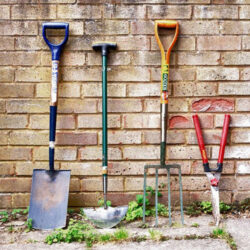
Gardening Tools (1)
-
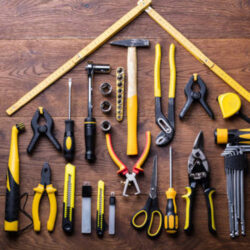
Hand Tools (1)
-
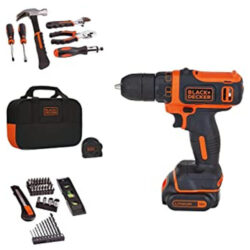
Power Tool Parts & Accessories (1)
-
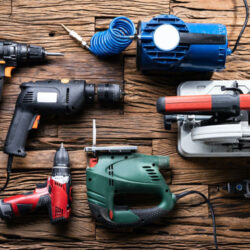
Power Tools (1)
-
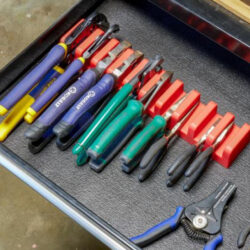
Tool Organizers (1)
Power & Hand Tools
Power and hand tools are indispensable components of any DIY enthusiast or professional tradesperson's toolkit. These tools come in a staggering array of forms and functions, each designed to perform specific tasks with precision and efficiency. Power tools are the workhorses of the workshop, offering unparalleled speed and power. Electric drills effortlessly bore holes through various materials, while circular saws slice through lumber with ease.
Angle grinders are indispensable for metalwork, smoothing welds, and cutting through stubborn materials. Meanwhile, cordless screwdrivers make assembling furniture a breeze, and jigsaws offer unmatched versatility when it comes to intricate cutting. Wrenches and pliers are essential for gripping and turning, while hammers are indispensable for driving nails and shaping metal. Screwdrivers, chisels, and files offer finesse in tasks that require careful manipulation, such as carpentry or delicate assembly work.
When it comes to buying power and hand tools, making informed decisions is essential to ensure you get the right tools for the job. Before diving into the buying process, it's crucial to assess your specific needs and the tasks you'll be undertaking. Consider the materials you'll be working with, the scale of your projects, and your level of expertise.
Types of Power Tools:
Drills:
Drills are versatile power tools used to create holes in various materials like wood, metal, plastic, and masonry. They come in various types, including corded and cordless, and can be equipped with different attachments for tasks such as drilling, driving screws, and mixing paints.
Circular Saws:
Circular saws are powerful cutting tools that feature a rotating circular blade. They are used to make straight cuts in materials like wood, metal, plastic, and more. Circular saws are available in different sizes and are often used in construction, woodworking, and other cutting-intensive applications.
Angle Grinders:
Angle grinders, also known as disc grinders, are handheld power tools used for grinding, cutting, and polishing tasks. They are equipped with abrasive discs or wheels and are commonly used in metal fabrication, construction, and metalworking projects.
Jigsaws:
Jigsaws are versatile tools designed for making intricate curved cuts in various materials. They use a reciprocating blade to cut through wood, metal, plastic, and other materials. Jigsaws are widely used in woodworking, crafting, and artistic projects.
Power Sanders:
Power sanders are used to smoothen surfaces by abrasion. They come in various types, including belt sanders, orbital sanders, and random orbital sanders. These tools are crucial for achieving a smooth finish on woodworking projects.
Power Routers:
Routers are used to hollow out an area of a hard workpiece, typically in woodworking. They are versatile tools that can shape edges, create decorative patterns, and cut grooves. Routers come in both handheld and mounted (router table) variations.
Impact Drivers:
Impact drivers are specialized tools for driving screws and bolts into materials. They use a combination of rotational force and concussive blows to provide high torque, making them efficient for heavy-duty fastening tasks.
Hand Tools:
Hammer:
Hammers are basic hand tools with a weighted head and a handle. They are use for driving nails, breaking objects apart, and shaping materials. Various types of hammers, such as claw hammers, ball-peen hammers, and sledgehammers, are designed for specific tasks.
Screwdrivers:
Screwdrivers are used to tighten or loosen screws in various applications. They consist of a handle and a shaft with a tip that fits into screw heads. Different types of screwdriver tips, such as flathead and Phillips, cater to different screw types.
Pliers:
Pliers are gripping tools use to hold, bend, and manipulate objects. They come in various types, including regular pliers, needle-nose pliers, and locking pliers (Vise-Grips), each tailore to specific tasks.
Wrenches:
Wrenches are tools use for turning bolts and nuts. They come in different styles such as open-end, box-end, adjustable, and combination wrenches. Wrenches provide leverage to tighten or loosen fasteners.
Chisels:
Chisels are cutting tools with a sharp edge on one end, use for carving and cutting through materials like wood and metal. They are available in various shapes and sizes for different cutting applications.
Hand Saws:
Hand saws are manual cutting tools with tooth blades use for cutting wood, plastic, and metal. Different types of hand saws include crosscut saws, rip saws, and coping saws, each design for specific cutting purposes.
Features Power Tools:
Versatility: Power tools come in a wide range of types, each design for specific tasks, such as drilling, cutting, grinding, and sanding, allowing users to tackle various projects with a single tool.
Efficiency: Power tools are engineer for speed and efficiency, significantly reducing the time requir to complete tasks compare to manual methods.
Precision: Many power tools, such as routers and laser-guided saws, offer precise control, leading to accurate and consistent results.
Adjustability: Some power tools feature adjustable settings, speed controls, and depth adjustments, enabling users to tailor the tool's performance to specific materials and tasks.
Ergonomics: Many power tools are design with ergonomic handles, vibration dampening, and lightweight materials to enhance user comfort during extended periods of use.
Hand Tools:
Control: Hand tools provide direct control over the force applied, making them ideal for delicate tasks that require finesse and accuracy.
Portability: Hand tools are typically compact and lightweight, allowing users to work in tight spaces or locations where power sources might be unavailable.
Quiet Operation: Unlike power tools that generate noise, hand tools operate quietly, making them suitable for tasks that require a quieter work environment.
Reliability: Hand tools have fewer components and moving parts, reducing the likelihood of mechanical failures or breakdowns during use.
Benefits Power Tools:
Time Savings: Power tools expedite tasks, enabling users to complete projects more quickly and efficiently, which is especially beneficial in commercial and industrial settings.
Productivity: With power tools, users can handle larger workloads, allowing them to take on more projects and achieve higher productivity levels.
Complex Tasks: Power tools simplify complex tasks that might be time-consuming or nearly impossible to complete manually, such as cutting through tough materials or shaping intricate designs.
Consistency: Power tools deliver consistent results, ensuring uniformity in cuts, holes, and other tasks that demand precision.
Hand Tools:
Skill Development: Using hand tools hones manual skills and craftsmanship, making them ideal for artisans, hobbyists, and those who enjoy hands-on work.
Cost-Effectiveness: Hand tools are generally more affordable than power tools and have lower maintenance costs due to their simpler design.
Safety: Hand tools often pose fewer risks than power tools, making them suitable for beginners or tasks that require a cautious approach.
Safety Considerations Power Tools:
Training: Proper training is essential before using power tools to understand their functions, potential hazards, and safety protocols.
Personal Protective Equipment (PPE): Always wear appropriate PPE, such as safety glasses, hearing protection, gloves, and dust masks, to safeguard against flying debris, noise, and particles.
Secure Workspace: Ensure the work area is well-lit, clean, and free of clutter to prevent accidents and distractions while operating power tools.
Hand Tools:
Proper Grip: Maintain a secure grip on hand tools to prevent slipping and ensure accurate control during use.
Sharpness: Keep hand tools properly sharpened; dull tools can lead to increased effort and pose safety risks due to slipping.
Appropriate Application: Use the right hand tool for the task to prevent damage to the tool and ensure safe and efficient operation.
Power & Hand Tools
Power and hand tools are indispensable components of any DIY enthusiast or professional tradesperson's toolkit. These tools come in a staggering array of forms and functions, each designed to perform specific tasks with precision and efficiency. Power tools are the workhorses of the workshop, offering unparalleled speed and power. Electric drills effortlessly bore holes through various materials, while circular saws slice through lumber with ease.
Angle grinders are indispensable for metalwork, smoothing welds, and cutting through stubborn materials. Meanwhile, cordless screwdrivers make assembling furniture a breeze, and jigsaws offer unmatched versatility when it comes to intricate cutting. Wrenches and pliers are essential for gripping and turning, while hammers are indispensable for driving nails and shaping metal. Screwdrivers, chisels, and files offer finesse in tasks that require careful manipulation, such as carpentry or delicate assembly work.
When it comes to buying power and hand tools, making informed decisions is essential to ensure you get the right tools for the job. Before diving into the buying process, it's crucial to assess your specific needs and the tasks you'll be undertaking. Consider the materials you'll be working with, the scale of your projects, and your level of expertise.
Types of Power Tools:
Drills:
Drills are versatile power tools used to create holes in various materials like wood, metal, plastic, and masonry. They come in various types, including corded and cordless, and can be equipped with different attachments for tasks such as drilling, driving screws, and mixing paints.
Circular Saws:
Circular saws are powerful cutting tools that feature a rotating circular blade. They are used to make straight cuts in materials like wood, metal, plastic, and more. Circular saws are available in different sizes and are often used in construction, woodworking, and other cutting-intensive applications.
Angle Grinders:
Angle grinders, also known as disc grinders, are handheld power tools used for grinding, cutting, and polishing tasks. They are equipped with abrasive discs or wheels and are commonly used in metal fabrication, construction, and metalworking projects.
Jigsaws:
Jigsaws are versatile tools designed for making intricate curved cuts in various materials. They use a reciprocating blade to cut through wood, metal, plastic, and other materials. Jigsaws are widely used in woodworking, crafting, and artistic projects.
Power Sanders:
Power sanders are used to smoothen surfaces by abrasion. They come in various types, including belt sanders, orbital sanders, and random orbital sanders. These tools are crucial for achieving a smooth finish on woodworking projects.
Power Routers:
Routers are used to hollow out an area of a hard workpiece, typically in woodworking. They are versatile tools that can shape edges, create decorative patterns, and cut grooves. Routers come in both handheld and mounted (router table) variations.
Impact Drivers:
Impact drivers are specialized tools for driving screws and bolts into materials. They use a combination of rotational force and concussive blows to provide high torque, making them efficient for heavy-duty fastening tasks.
Hand Tools:
Hammer:
Hammers are basic hand tools with a weighted head and a handle. They are use for driving nails, breaking objects apart, and shaping materials. Various types of hammers, such as claw hammers, ball-peen hammers, and sledgehammers, are designed for specific tasks.
Screwdrivers:
Screwdrivers are used to tighten or loosen screws in various applications. They consist of a handle and a shaft with a tip that fits into screw heads. Different types of screwdriver tips, such as flathead and Phillips, cater to different screw types.
Pliers:
Pliers are gripping tools use to hold, bend, and manipulate objects. They come in various types, including regular pliers, needle-nose pliers, and locking pliers (Vise-Grips), each tailore to specific tasks.
Wrenches:
Wrenches are tools use for turning bolts and nuts. They come in different styles such as open-end, box-end, adjustable, and combination wrenches. Wrenches provide leverage to tighten or loosen fasteners.
Chisels:
Chisels are cutting tools with a sharp edge on one end, use for carving and cutting through materials like wood and metal. They are available in various shapes and sizes for different cutting applications.
Hand Saws:
Hand saws are manual cutting tools with tooth blades use for cutting wood, plastic, and metal. Different types of hand saws include crosscut saws, rip saws, and coping saws, each design for specific cutting purposes.
Features Power Tools:
Versatility: Power tools come in a wide range of types, each design for specific tasks, such as drilling, cutting, grinding, and sanding, allowing users to tackle various projects with a single tool.
Efficiency: Power tools are engineer for speed and efficiency, significantly reducing the time requir to complete tasks compare to manual methods.
Precision: Many power tools, such as routers and laser-guided saws, offer precise control, leading to accurate and consistent results.
Adjustability: Some power tools feature adjustable settings, speed controls, and depth adjustments, enabling users to tailor the tool's performance to specific materials and tasks.
Ergonomics: Many power tools are design with ergonomic handles, vibration dampening, and lightweight materials to enhance user comfort during extended periods of use.
Hand Tools:
Control: Hand tools provide direct control over the force applied, making them ideal for delicate tasks that require finesse and accuracy.
Portability: Hand tools are typically compact and lightweight, allowing users to work in tight spaces or locations where power sources might be unavailable.
Quiet Operation: Unlike power tools that generate noise, hand tools operate quietly, making them suitable for tasks that require a quieter work environment.
Reliability: Hand tools have fewer components and moving parts, reducing the likelihood of mechanical failures or breakdowns during use.
Benefits Power Tools:
Time Savings: Power tools expedite tasks, enabling users to complete projects more quickly and efficiently, which is especially beneficial in commercial and industrial settings.
Productivity: With power tools, users can handle larger workloads, allowing them to take on more projects and achieve higher productivity levels.
Complex Tasks: Power tools simplify complex tasks that might be time-consuming or nearly impossible to complete manually, such as cutting through tough materials or shaping intricate designs.
Consistency: Power tools deliver consistent results, ensuring uniformity in cuts, holes, and other tasks that demand precision.
Hand Tools:
Skill Development: Using hand tools hones manual skills and craftsmanship, making them ideal for artisans, hobbyists, and those who enjoy hands-on work.
Cost-Effectiveness: Hand tools are generally more affordable than power tools and have lower maintenance costs due to their simpler design.
Safety: Hand tools often pose fewer risks than power tools, making them suitable for beginners or tasks that require a cautious approach.
Safety Considerations Power Tools:
Training: Proper training is essential before using power tools to understand their functions, potential hazards, and safety protocols.
Personal Protective Equipment (PPE): Always wear appropriate PPE, such as safety glasses, hearing protection, gloves, and dust masks, to safeguard against flying debris, noise, and particles.
Secure Workspace: Ensure the work area is well-lit, clean, and free of clutter to prevent accidents and distractions while operating power tools.
Hand Tools:
Proper Grip: Maintain a secure grip on hand tools to prevent slipping and ensure accurate control during use.
Sharpness: Keep hand tools properly sharpened; dull tools can lead to increased effort and pose safety risks due to slipping.
Appropriate Application: Use the right hand tool for the task to prevent damage to the tool and ensure safe and efficient operation.



























